|
CARDIOVASCULAR DISEASES |
Risk factors, genetic predisposition, and environmental factors all affect the
arteries in starting up atherosclerotic processes (Atherogenesis).
Atherosclerosis represents the main cause of death or early disability in
developed and emerging nations, with a progressive increase in the latter. In
races other than Caucasian, the risk of Atherosclerosis begins earlier and in a
more serious manner. Among these races, the groups most affected are low-income
populations.
|
|
|
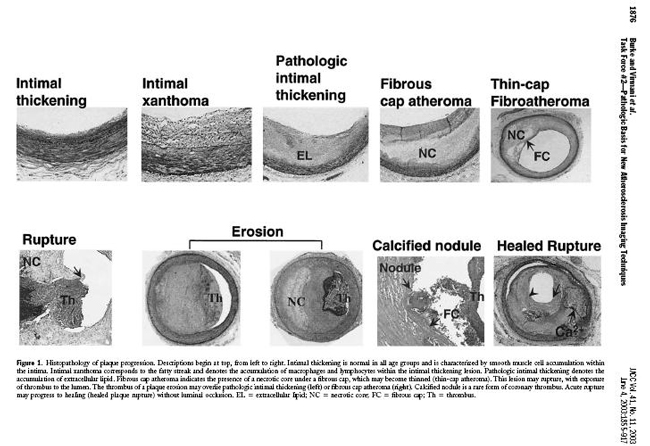 |
|
Fig.1. Atherosclerosis : pathological changes of the artery vessel |
|
|
In humans, the atherosclerotic process generally takes many years and even
decades. The forming of the atherosclerotic plaque is a complex process that
leads to the progressive reduction of the lumen of the arteries. If the process
occurs in a gradual manner certain symptoms such as exertion angina and
intermittent claudication will appear slowly and can easily re-occur. Although
Atherosclerosis is a systemic pathology, involving the entire cardiovascular
district, it attacks certain organs more frequently.
When Atherosclerosis of the coronary arteries provokes coronary stenosis and
occlusion this causes myocardial infarction and angina pectoris. |
|
|
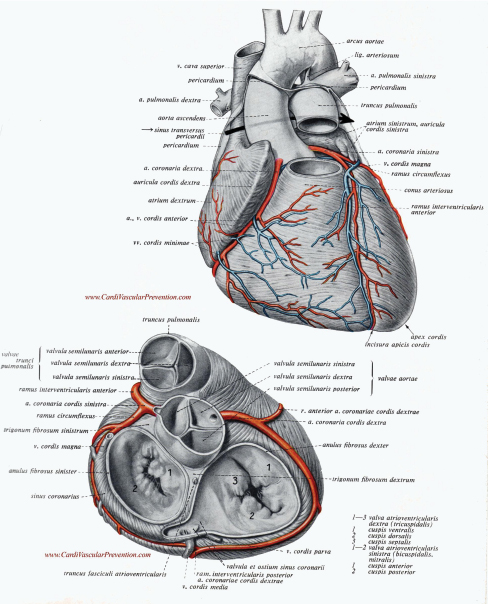 |
|
Fig.2. The heart: Main coronary artery vessels |
|
|
|
|
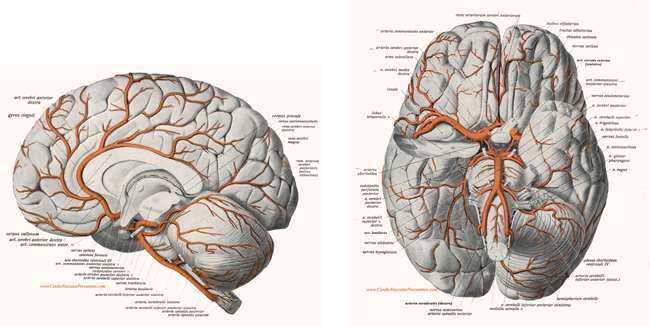 |
|
Fig.3. The brain: Main artery vessels |
|
|
|
|
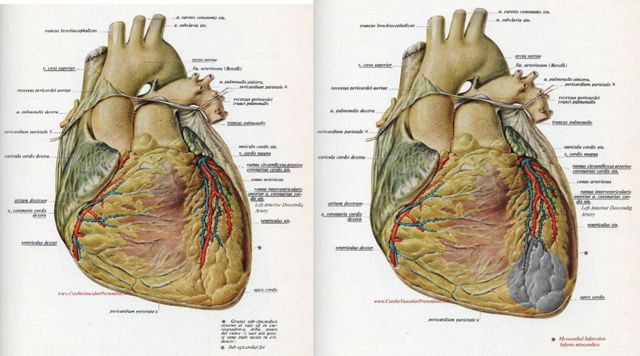 |
|
Fig.4. The heart: Normal coronary arteries and veins |
Fig.5. Myocardial infarction: occlusion of the left anterior descending
coronary artery |
|
|
|
When Atherosclerosis of the arteries of the central nervous system causes
carotid stenosis and vascular thrombosis, this provokes an ischemic ictus or
stroke. Ruptured cerebral aneurysms that are congenital, or based on
Atherosclerosis, are the cause of brain haemorrhages. |
|
|
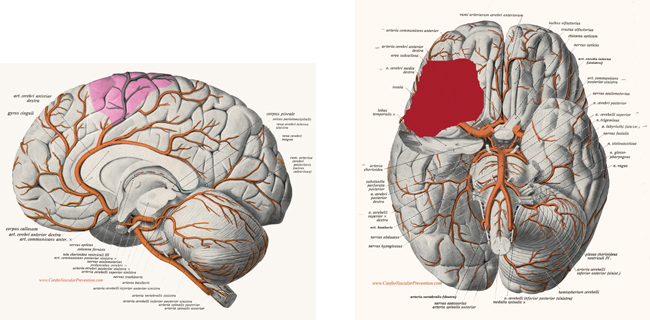 |
|
Fig.6 Ischemic ictus: occlusion of the right distal anterior cerebral artery |
Fig.7. Brain haemorrhage : rupture of the right distal anterior cerebral
artery |
|
|
|
Atherosclerosis of the renal arteries leads to renal failure, and renal
infarction, while Atherosclerosis of the splacnic circulation will provoke
mesenteric ischemia or intestinal infarction. |
|
When peripheral circulation is involved, this leads to limb ischemia that will
cause intermittent claudication, ulcers and gangrene of the limbs. These
events can occur very dramatically as a result of the sudden rupture of the
atherosclerotic plaque and the occlusion of the relative artery vessel, with
acute blocking of the circulation leading to sudden death. |
|
|
|
Atherosclerotic events do not always cause artery stenosis or occlusive lesions.
Ectasia (dilatation) and aneurisms are more frequently observed affecting the
aorta, but other artery vessels can be affected, such as coronary, cerebral and
peripheral arteries. |
|
Gli aneurismi frequentemente sono complicati da rottura e, o da dissezione |
|
|
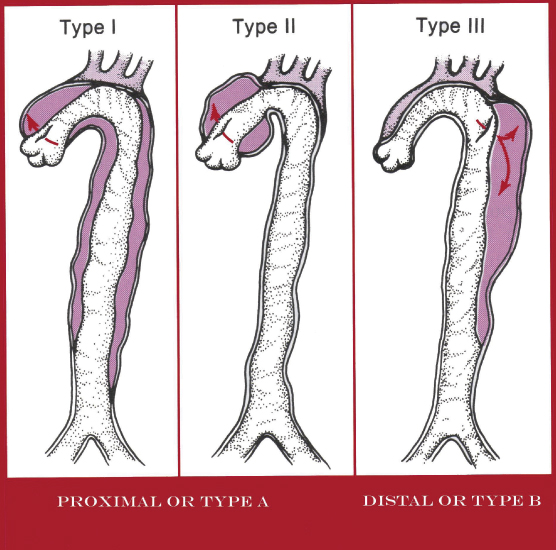 |
Fig. 8. Classification system for aortic aneurysm and dissection.
Red: intimal tear. Violet: dissection |
|
|
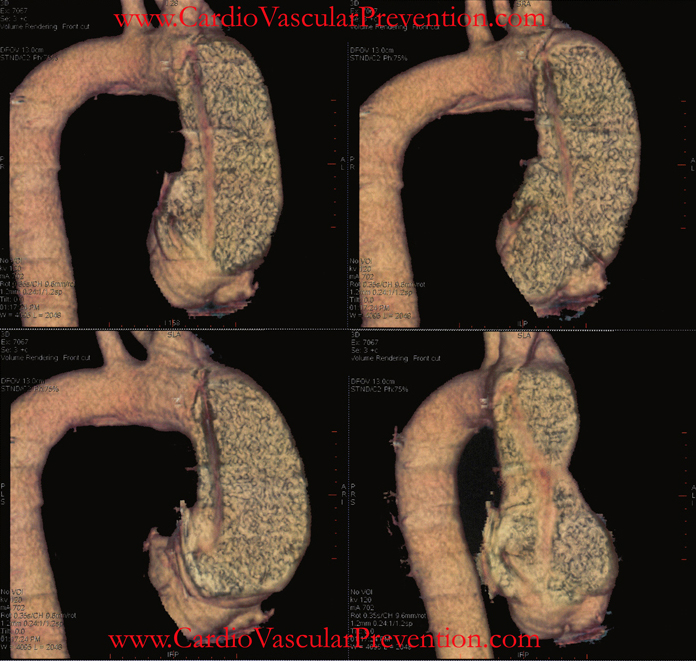 |
|
Fig 9. Proximal Type II Dissecting Aortic Aneurysm. CT Angiography 3D Rendering |
|
|
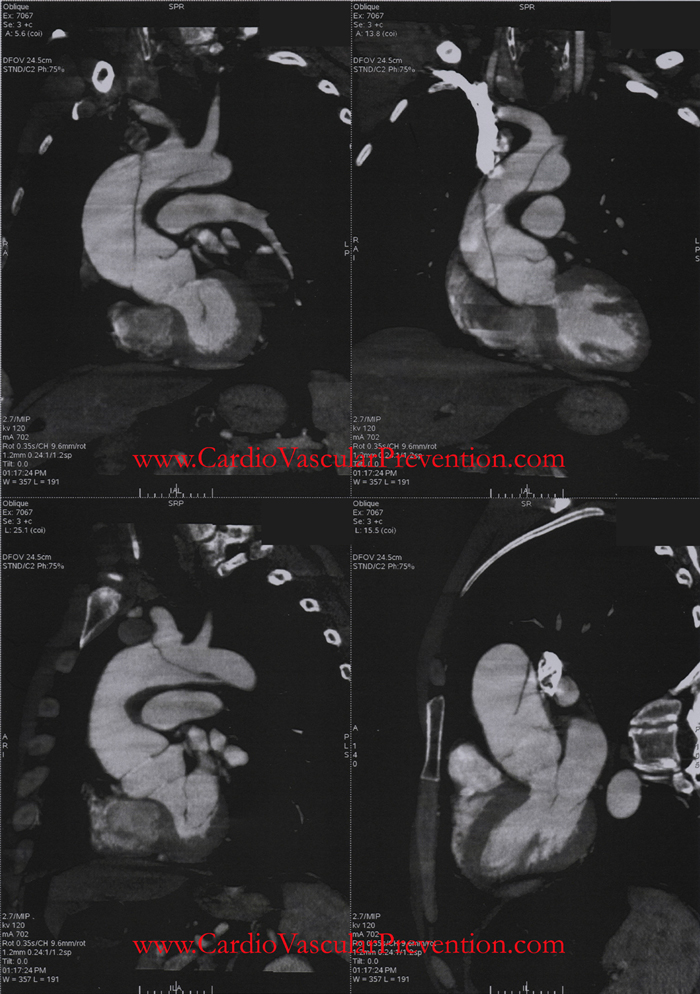 |
|
Fig 9. 1 Proximal Type II Dissecting Aortic Aneurysm. CT Angiography. |
|
|
 |
|
Fig 10 Distal Type III Aortic Aneurysm. CT Angiography and 3D Rendering |
|
|
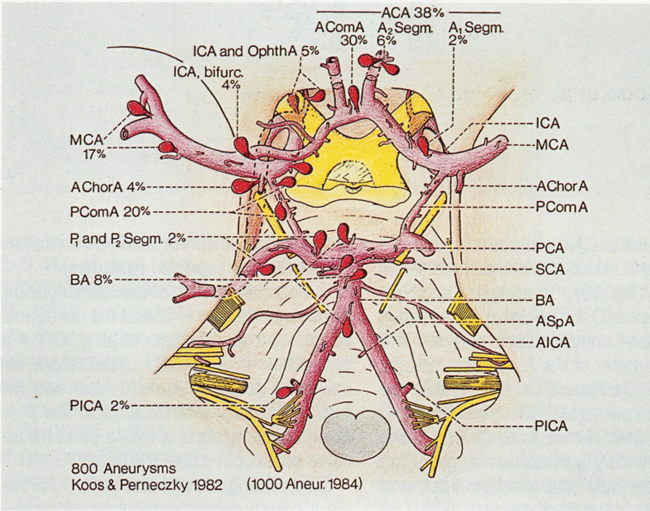 |
|
Fig.11.Cerebral Aneurysm: main localizations |
|
|